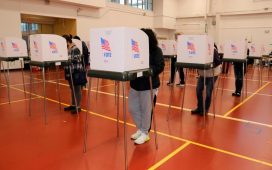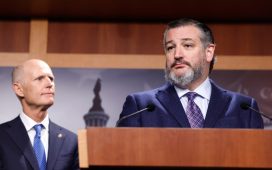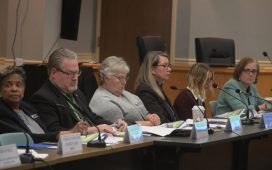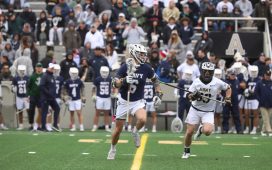The Breeders’ Cup is scheduled to return to Santa Anita in Arcadia, Calif. on Nov. 1-2
The Breeders’ Cup board of directors meets on Thursday, June 27, and a key topic for discussion almost certainly will be whether or not to maintain the organization’s commitment to hold this year’s two-day championships at Santa Anita Park in Arcadia, Calif., on Nov. 1-2.
The easy decision would be to say that things are just too hot out there and it’s not worth taking a chance of running the Breeders’ Cup races at a track where 30 horses died while training or racing over the course of the winter and spring meets from Dec. 26 through June 23.
Santa Anita has been the focal point for animal rights protesters who want to end racing, and a bloodthirsty media seeking television ratings and internet clicks.
Breeders’ Cup board members are charged with making fiduciary decisions on behalf of Thoroughbred breeders and owners who provide millions of dollars a year in foal, stallion, pre-entry and entry fees. Negative publicity surrounding the event – even if the two days of racing are conducted safely and without any incidents – could cause short-term harm to the Breeders’ Cup.
So moving this year’s event from Southern California to another location – most likely Churchill Downs in Louisville, Ky. – would be an easy decision to make.
It would also be wrong.
The Breeders’ Cup can run from all the turmoil we’ve seen at Santa Anita this year, but it cannot hide. Protesters know where Churchill Downs is, and the news media has already been reporting that racehorses die there, too, with an unacceptably high mortality rate of 2.73 per thousand starts in 2018 (compared to a national average from the Equine Injury Database of 1.68 per thousand).
This is the time for the Breeders’ Cup to make a statement that it supports the wide-ranging industry reforms initiated at Santa Anita in March, that it is willing to face the protesters and media eye to eye and say, “We are doing what’s right for the horses by holding our championship event here at Santa Anita.”
A recent letter to Breeders’ Cup president and CEO Craig Fravel from Greg Avioli, the president and CEO of Thoroughbred Owners of California, said, “I write to express the unanimous view of the TOC board of directors on the importance of the Breeders’ Cup Ltd. running this year’s championships at Santa Anita as previously announced.”
Avioli emphasized that the state’s horse industry “has come together in ways we have never witnessed before. From racetracks to owners to trainers to jockeys to vets to regulators, we have all united to take the necessary steps to ensure a much higher level of safety, integrity and accountability for our equine athletes. Governor Gavin Newsom recently stated how important it was to show the world at the 2019 Breeders’ Cup that California puts horse safety first.”
The letter referenced the new medication and safety protocols that are based on standards set by the International Federation of Horseracing Authorities, noting, “these reforms in the aggregate now place California at or above the strictest levels of medication and safety procedures in the world for both training and racing.”
Racing surface safety was also addressed.
“By most all accounts,” Avioli wrote, “any issues with the racing surface at Santa Anita have been remedied with the end of the rainy season and the hard work of Dennis Moore and Mick Peterson. To that point at a recent legislative hearing in Sacramento, Hall of Fame rider Mike Smith testified that while he could ride at most any track in the world, he chose California as his home base because ‘Santa Anita is the safest track in the world.’”
These are challenging and difficult times for the Thoroughbred industry, and not just in Southern California. Many in the general public who knew nothing about racing are now keenly aware of just how dangerous this sport can be for its equine and human athletes. They are demanding that racing do all it can to make the sport as safe as possible.
California’s Thoroughbred industry stakeholders have done exactly that, in many cases tossing aside self interests in hopes of ensuring the sport has a viable future – in California and elsewhere – in a changing society. Now is the time to support California’s Thoroughbred racing industry, not abandon it.
That’s my view from the eighth pole.
New to the Paulick Report? Click here to sign up for our daily email newsletter to keep up on this and other stories happening in the Thoroughbred industry.
Copyright © 2019 Paulick Report.








